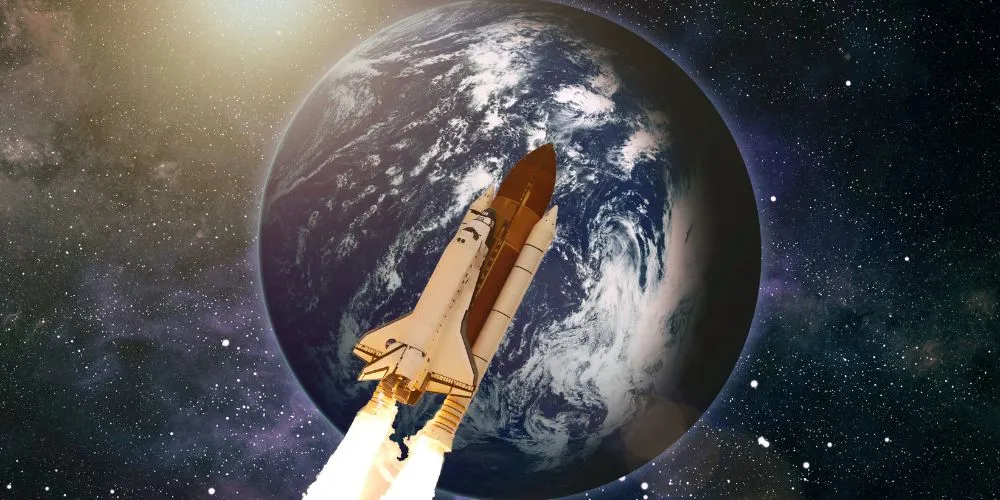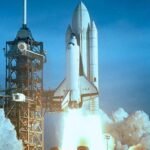Space missions to the Moon are milestones in humanity’s exploration of the cosmos, representing a convergence of technological innovation, scientific discovery, and the indomitable spirit of exploration. This article explores the historical significance, key missions, scientific accomplishments, and potential future space missions to the Moon.
The Historical Significance of Moon Missions
The quest to explore the Moon has been intertwined with human history and the pursuit of knowledge about Earth’s celestial companion. From ancient myths and folklore to the era of space exploration, the Moon has captivated human imagination. The modern era of Moon missions began with the space race between the United States and the Soviet Union during the mid-20th century.
The Space Race and the Apollo Program
The Apollo program, initiated by NASA in response to the Soviet Union’s early successes in space exploration, became a symbol of technological prowess and human achievement. Apollo 11, launched on July 16, 1969, marked the first successful crewed mission to the Moon, with astronauts Neil Armstrong and Buzz Aldrin becoming the first humans to set foot on its surface on July 20, 1969.
Scientific Objectives and Lunar Exploration
The primary scientific objectives of Moon missions have evolved to encompass geological studies, understanding the lunar composition, and investigating the Moon’s role in the solar system’s early history. Subsequent Apollo missions (Apollo 12 to Apollo 17) contributed to a wealth of lunar knowledge, collecting samples, conducting experiments, and deploying scientific instruments.
Lunar Missions Beyond Apollo
Following the Apollo era, interest in lunar exploration persisted, resulting in numerous robotic missions. The Soviet Luna program, with its Luna landers and rovers, provided valuable data in the early 1970s. In recent years, a resurgence in lunar exploration has been fueled by government space agencies and private entities.
Key Missions and Achievements
Several key missions have played pivotal roles in advancing our understanding of the Moon, contributing to scientific knowledge, and laying the groundwork for future lunar exploration.
Apollo 11 – The First Lunar Landing
Apollo 11, the historic mission launched on July 16, 1969, achieved the first successful human landing on the Moon. Neil Armstrong’s iconic words, “That’s one small step for [a] man, one giant leap for mankind,” marked a momentous occasion in human history, symbolizing the culmination of years of effort and technological innovation.
Apollo 15 – Scientific Exploration
Apollo 15, launched in 1971, marked a significant evolution in lunar exploration, with a greater emphasis on scientific objectives. The mission included the deployment of the Lunar Roving Vehicle, allowing astronauts David Scott and James Irwin to explore wider areas of the lunar surface and conduct in-depth geological studies.
Luna 2 – First Human-Made Object to Reach the Moon
Launched by the Soviet Union in 1959, Luna 2 became the first human-made object to reach the Moon. Though it did not land, its impact on the lunar surface provided crucial data about cosmic rays and radiation in space.
Chandrayaan-2 – India’s Lunar Endeavor
Chandrayaan-2, launched by the Indian Space Research Organisation (ISRO) in 2019, aimed to explore the Moon’s south polar region. While the lander Vikram experienced a hard landing, the orbiter continued to study the lunar surface, providing valuable insights into lunar geology.
Chang’e Missions – China’s Lunar Exploration
China’s Chang’e missions, named after the mythical Chinese moon goddess, have been instrumental in advancing lunar exploration. Chang’e-3 achieved the first soft landing on the Moon by a Chinese spacecraft in 2013, deploying the Yutu rover. Subsequent missions, including Chang’e-4 and Chang’e-5, have further advanced scientific understanding and enhanced lunar sample return capabilities.
Future Prospects and Ongoing Missions
The future of lunar exploration is marked by ambitious plans from various space agencies and private entities, aiming to build on the achievements of past missions and unlock new mysteries of the Moon.
Artemis Program – Returning Humans to the Moon
NASA’s Artemis program represents a new era of lunar exploration, aiming to return humans to the Moon by the mid-2020s. Artemis missions will include the first woman and the next man to walk on the lunar surface, fostering sustainable exploration and preparing for future crewed missions to Mars.
Lunar Gateway – International Collaboration
The Lunar Gateway, a planned space station orbiting the Moon, is a collaborative effort involving NASA, international space agencies, and commercial partners. It will serve as a staging point for crewed missions to the lunar surface and facilitate long-term exploration.
Commercial Lunar Exploration
Private companies, including SpaceX and Blue Origin, actively participate in lunar exploration. SpaceX’s Starship, a fully reusable spacecraft, aims to carry humans and cargo to the Moon and beyond. Blue Origin’s Blue Origin Blue Moon lander is designed for lunar cargo transportation.
International Lunar Research Stations
Countries like Russia, China, and Europe have outlined plans to establish lunar research stations and foster scientific exploration and potential human habitats on the Moon. These collaborative efforts signify a shared commitment to unraveling the Moon’s mysteries and laying the groundwork for future space exploration.
Conclusion
Space missions to the Moon represent a remarkable journey of human ingenuity, exploration, and scientific discovery. From the first tentative steps of Apollo 11 to the current era of international collaboration and commercial ventures, lunar exploration inspires humanity. As we look to the future, with ambitious plans and diverse missions on the horizon, the Moon remains a celestial canvas upon which we paint our dreams of understanding the cosmos and extending our presence into the far reaches of space.










